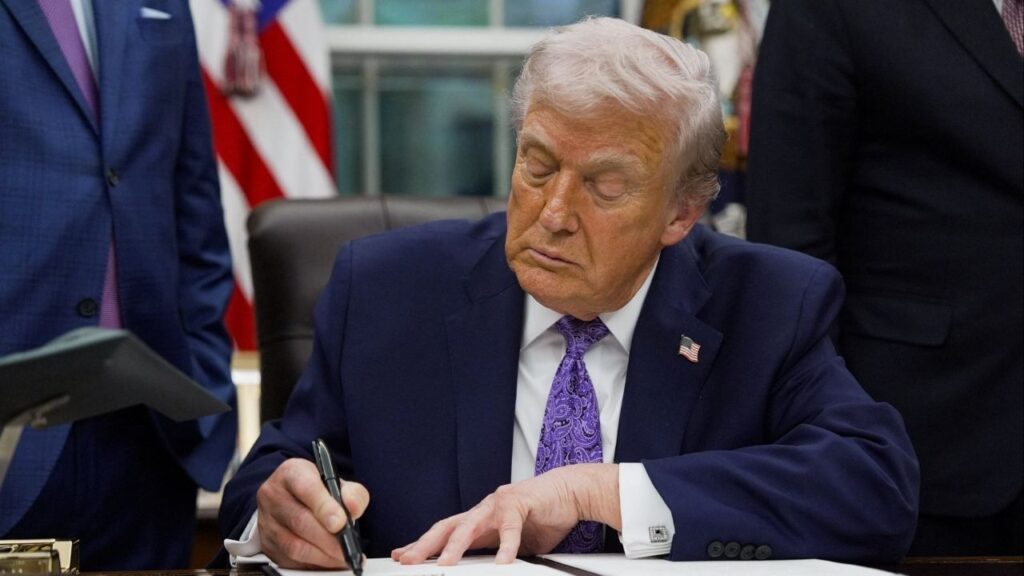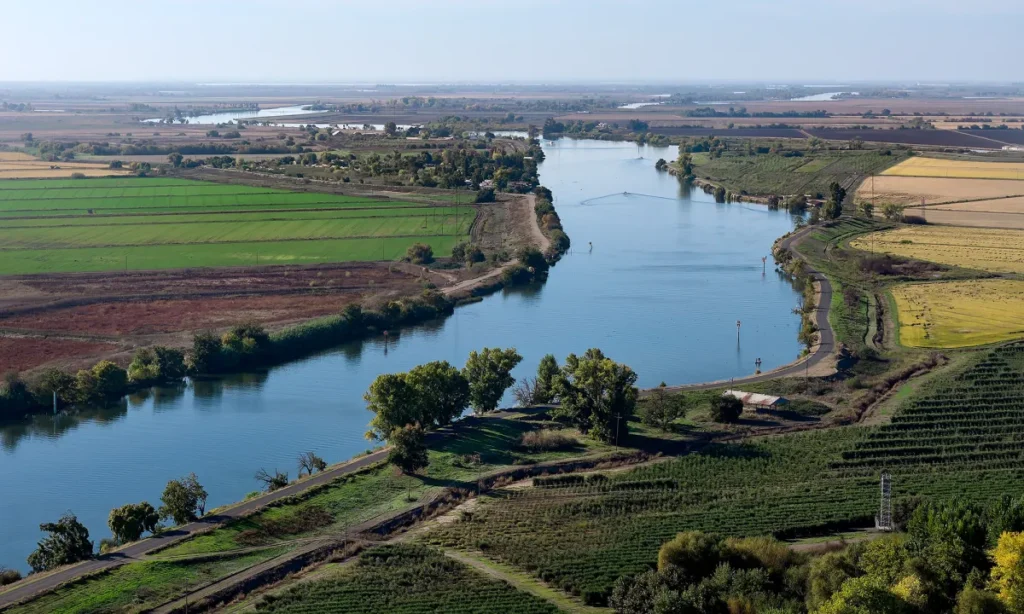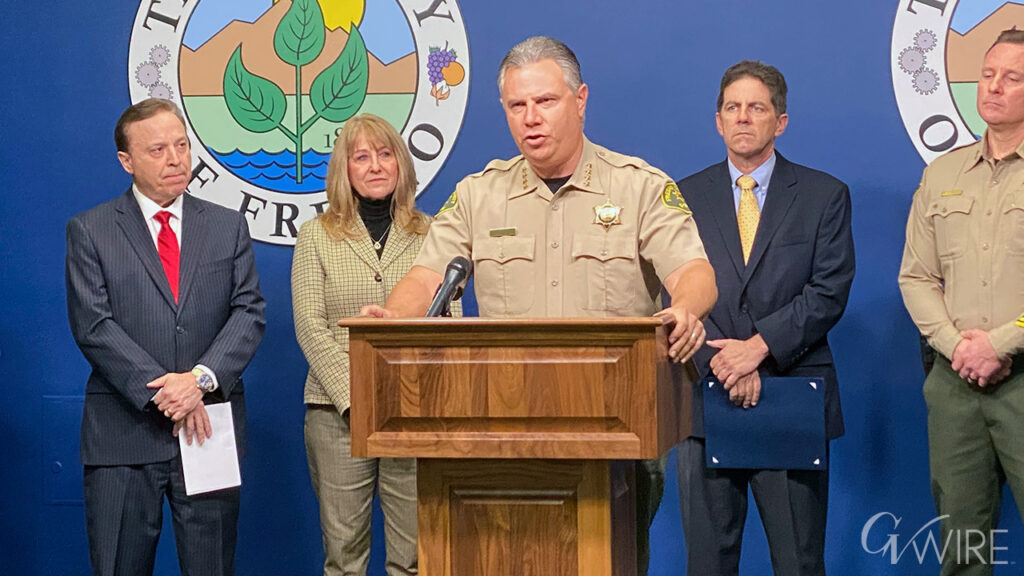FILE — Planes at Newark Liberty International Airport in Newark, N.J., May 7, 2025. Technology and staffing trouble at Newark Liberty International Airport could reverberate across the U.S. air travel industry. (Graham Dickie/The New York Times)

- Record 45.1 million Americans expected to travel this Memorial Day weekend amid airport disruptions and staffing issues.
- Travelers should arrive early, carry proper identification, and be prepared for potential delays at busy airports like Newark.
- New TSA rules require lithium batteries to be packed in carry-on luggage only, not in checked bags or gate-checked items.
Share
Travelers across the country are feeling anxious and uncertain during a time of upheaval at U.S. airports, and the upcoming Memorial Day weekend — the traditional start of the summer travel season — is shaping up to be especially fraught.
AAA forecasts a record 45.1 million people in the United States will travel at least 50 miles from home during the five days starting Thursday. IHG Hotels & Resorts reports seeing double-digit-percentage increases in holiday weekend travel bookings in areas such as the California wine country and Palm Beach, Florida.
According to the Airlines Reporting Corp., which tracks data that covers about two-thirds of global sales, domestic travel is up 4% this year, and fewer Americans are planning trips abroad this summer — which could make U.S. destinations particularly crowded.
Disruptions related to air traffic control at Newark Liberty International Airport in recent weeks, which could reverberate across the U.S. air travel industry, and recent air crashes have exacerbated the nervousness.
With increased demand on the beleaguered aviation industry, here’s what to know about traveling this holiday weekend.
Real ID Transition Smooth, so Far
The impact of the May 7 Real ID deadline has not prevented most passengers from flying, but could still lead to delays at security checkpoints. The Transportation Security Administration said this month that it planned to conduct additional screening for travelers without the federally compliant state-issued identification “until it is no longer considered a security vulnerability.”
Rebecca Alesia, a travel adviser with SmartFlyer in New York City, said that while many airports are separating those without Real ID cards for extra screening, it is still most efficient to carry a passport if you don’t have a Real ID.
Peter Vlitas, a vice president for the Internova Travel Group, one of the largest travel services companies in the world, said he applied for a passport card — an acceptable Real ID substitute that has no pages and can be used at land and sea crossings with Canada, Mexico, Bermuda and some Caribbean countries — so as to not have to carry his passport.
Travelers who anticipate having any issues with identification would be wise to budget for extra time in line.
A Tried-and-True Strategy: Get to Airport Early
Social media has been abuzz with what is known as “airport theory,” which suggests that since travelers need to be at their gate only 15 minutes before takeoff, they don’t need to show up at security until their flights begin boarding.
But Michael DiCostanzo, a content creator who believes he helped start this trend, said that his videos about zipping through security had been misunderstood — he was only trying to prove that security often takes less time than people think. He timed the journey through screening at four major airports and found that it often took only about 15 minutes.
“I think a lot of people became attached to this 15-minute number,” he said, adding that he likes to arrive at the airport 2 1/2 hours before his flights. “I never take any chances.”
So while delays and cancellations are out of a passenger’s control, getting to the airport early is a good way to ensure you’re prepared for potential delays. The rule of thumb is to arrive two hours before departure for domestic flights, and three hours for international flights.
Vlitas said he takes no chances, telling his travelers to arrive three hours before even a domestic journey during the holiday weekend.
“Planes are full,” Vlitas said. “If you miss your flight, there’s no guarantee you’ll get on the next one.”
Vlitas advised travelers to check in online before arriving at the airport. Additional prescreening services such as the TSA’s PreCheck program and Clear can help passengers move through security more quickly, he said, but cost extra.
Staffing Shortages May Affect Some Tourist Hot Spots
More than 330 million people visit the nation’s 63 national parks and hundreds of historic sites and other attractions managed by the National Park Service, places where staffing shortages resulting from budget cuts could affect plans. Already this year, some of the most popular parks have reported long traffic lines.
As part of the Trump administration’s effort to reduce the federal workforce, the Department of the Interior, which runs the park service, in February fired more than 1,000 National Park Service employees — and then more than 700 additional staff members submitted their resignations. Interior Secretary Doug Burgum then said the park service would hire thousands of workers in temporary, summer positions. Conservationists, outdoor enthusiasts and park rangers warned at the time that hundreds of sites run by the park service could be left understaffed during the busy summer season.
Visitors planning trips can plan ahead by looking up the site on the park service’s online guide, where they might be able to book passes.
The National Park Service didn’t respond to a request for comment.
Mind the New Rules About Batteries in Checked Luggage
The TSA announced recently that lithium batteries, including those found in phone chargers, power banks and portable chargers, can fly only in carry-on luggage.
The new rule comes after many airlines in Asia tightened rules concerning the batteries following a fire that destroyed an Air Busan plane as it waited on the tarmac in South Korea in January.
Under the new TSA guidelines, if a passenger’s bag is gate-checked, meaning that a carry-on is put in the cargo hold because of space limitations, that passenger must remove all lithium batteries from the bag and bring them into the plane’s cabin.
—
This article originally appeared in The New York Times.
By Claire Fahy/Graham Dickie
c. 2025 The New York Times Company
RELATED TOPICS:
Categories

Trump Signs Order Aimed at Curbing State AI Laws


















